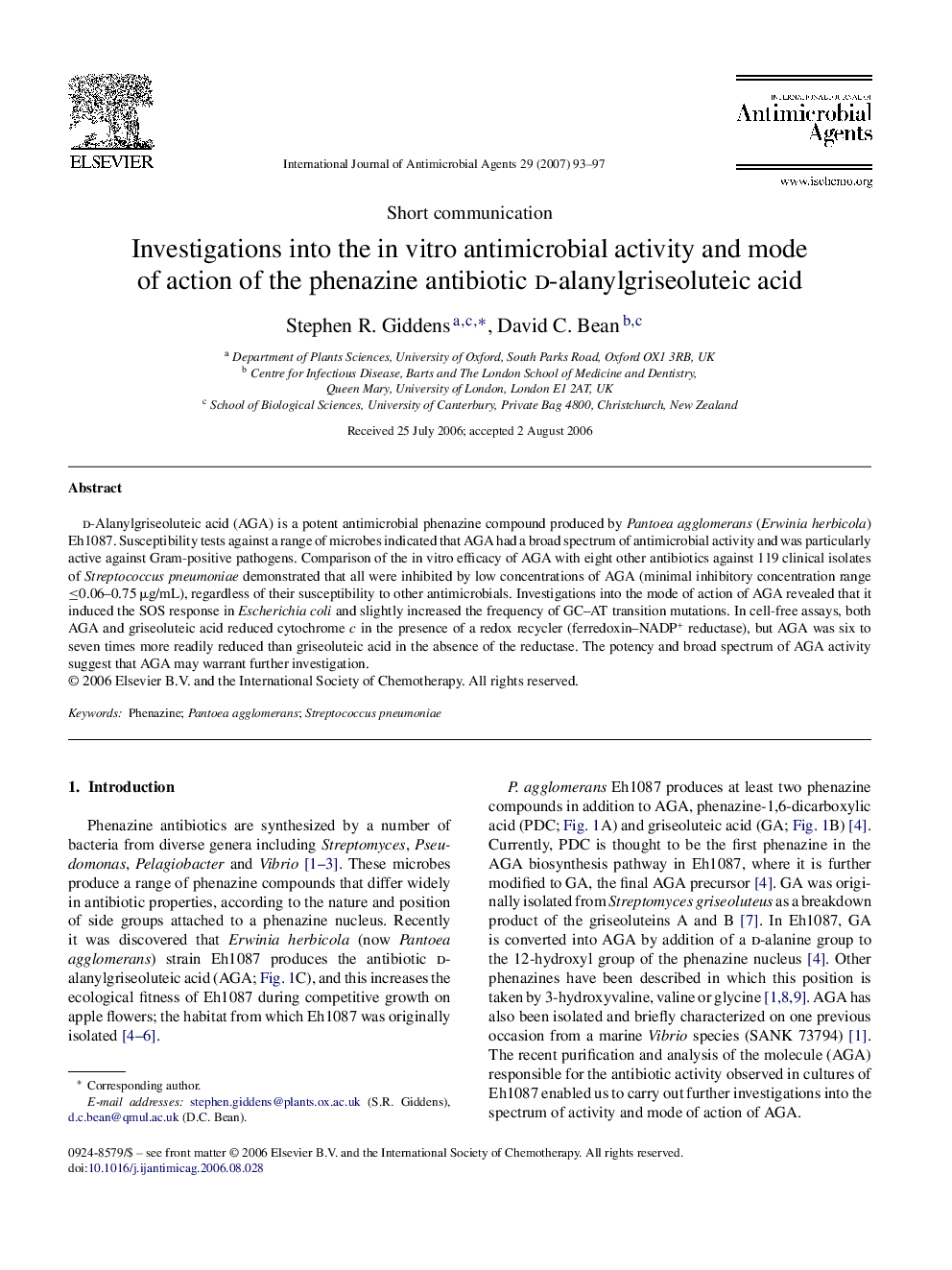| Article ID | Journal | Published Year | Pages | File Type |
|---|---|---|---|---|
| 3361344 | International Journal of Antimicrobial Agents | 2007 | 5 Pages |
d-Alanylgriseoluteic acid (AGA) is a potent antimicrobial phenazine compound produced by Pantoea agglomerans (Erwinia herbicola) Eh1087. Susceptibility tests against a range of microbes indicated that AGA had a broad spectrum of antimicrobial activity and was particularly active against Gram-positive pathogens. Comparison of the in vitro efficacy of AGA with eight other antibiotics against 119 clinical isolates of Streptococcus pneumoniae demonstrated that all were inhibited by low concentrations of AGA (minimal inhibitory concentration range ≤0.06–0.75 μg/mL), regardless of their susceptibility to other antimicrobials. Investigations into the mode of action of AGA revealed that it induced the SOS response in Escherichia coli and slightly increased the frequency of GC–AT transition mutations. In cell-free assays, both AGA and griseoluteic acid reduced cytochrome c in the presence of a redox recycler (ferredoxin–NADP+ reductase), but AGA was six to seven times more readily reduced than griseoluteic acid in the absence of the reductase. The potency and broad spectrum of AGA activity suggest that AGA may warrant further investigation.
